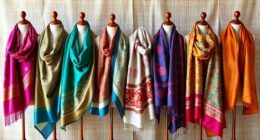To shop sustainably, focus on ethical production and eco-friendly materials like organic cotton and recycled fabrics. Support local businesses to reduce your carbon footprint and find unique pieces. Consider thrifting or vintage shopping to extend clothing life and save money. Mindful shopping practices, like building a capsule wardrobe and caring for your clothes, also play a huge role. There's so much more to explore about sustainable fashion and its impact, so keep going!
Key Takeaways
- Prioritize eco-friendly materials like organic cotton, linen, and Tencel to reduce environmental impact.
- Support brands committed to ethical production and fair labor practices in their supply chains.
- Choose local and small businesses to lower carbon footprints and foster community economies.
- Explore thrift stores and vintage shops to extend clothing life and discover unique pieces.
- Invest in quality, durable clothing to minimize waste and promote sustainable consumption habits.
Understanding Sustainable Fashion
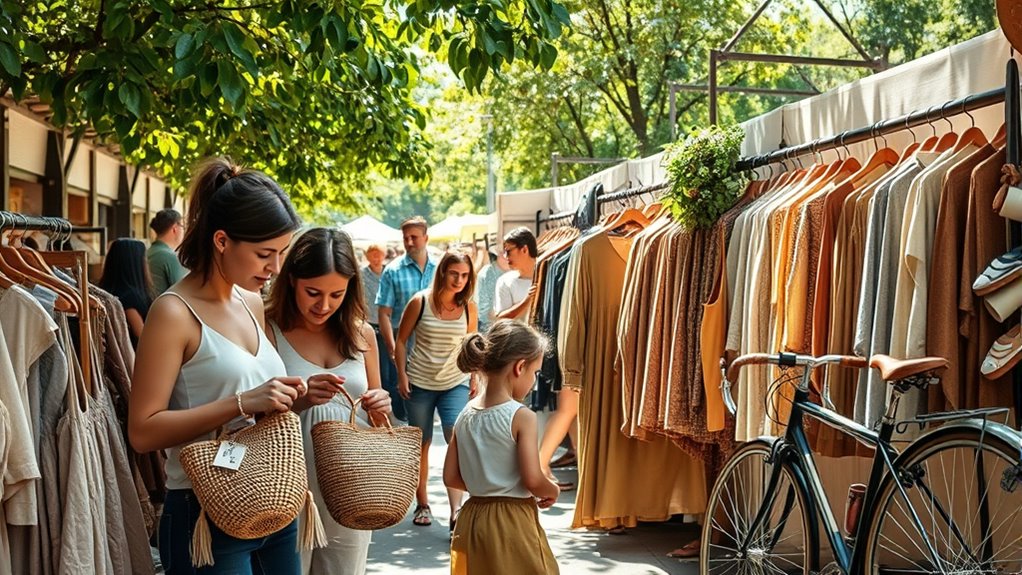
When you dive into sustainable fashion, you're not just choosing clothes; you're embracing a movement aimed at reducing environmental impact. This approach prioritizes ethical production, ensuring workers receive fair wages and safe working conditions.
Embrace sustainable fashion to support ethical production and reduce environmental impact while ensuring fair wages for workers.
It encourages you to think about the lifecycle of your clothing, from design to disposal. By opting for brands committed to sustainability, you're supporting practices that minimize waste and pollution.
You'll also find that sustainable fashion emphasizes quality over quantity, promoting durable pieces that last longer. This shift encourages you to cherish your wardrobe instead of constantly chasing trends.
Ultimately, understanding sustainable fashion means recognizing the interconnectedness of your choices and their impact on the planet, giving you the power to make a positive difference with every purchase.
Eco-Friendly Materials to Look For
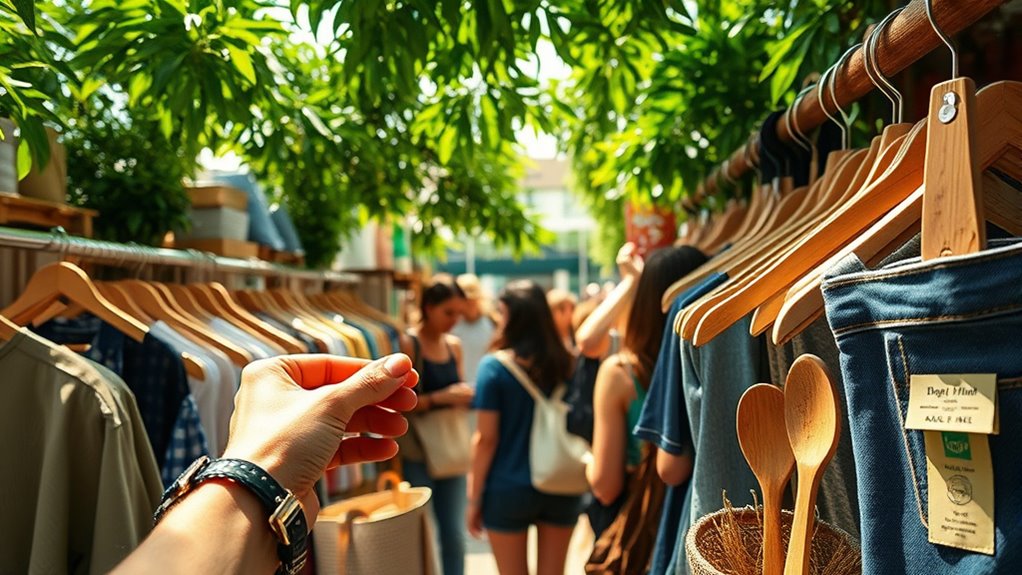
Eco-friendly materials play a crucial role in sustainable fashion, offering a way to reduce your environmental footprint while looking stylish.
When you shop, consider fabrics like organic cotton, which is grown without harmful pesticides, or linen, made from the flax plant, requiring less water.
Tencel, derived from sustainably sourced wood pulp, is another excellent choice, as it's biodegradable and produced in a closed-loop process.
Recycled materials, like rPET, help divert plastic waste from landfills and oceans, giving new life to old resources.
Don't overlook hemp, known for its durability and low environmental impact.
The Importance of Ethical Production
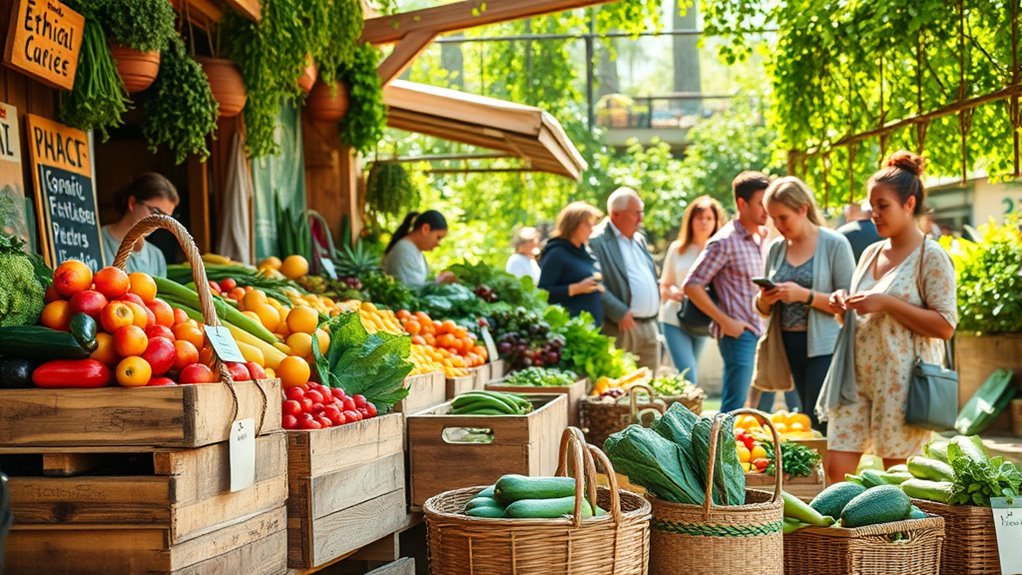
While choosing sustainable materials is essential, the importance of ethical production can't be overlooked.
Ethical production ensures that workers are treated fairly and work in safe environments. When you support brands that prioritize ethical practices, you're not just buying a product; you're contributing to a system that respects human rights and fosters community well-being.
Look for companies that provide transparency about their supply chains and labor practices. This way, you can make informed choices that align with your values.
By prioritizing ethical production, you help combat exploitation and promote a more just economy.
Supporting Local and Small Businesses
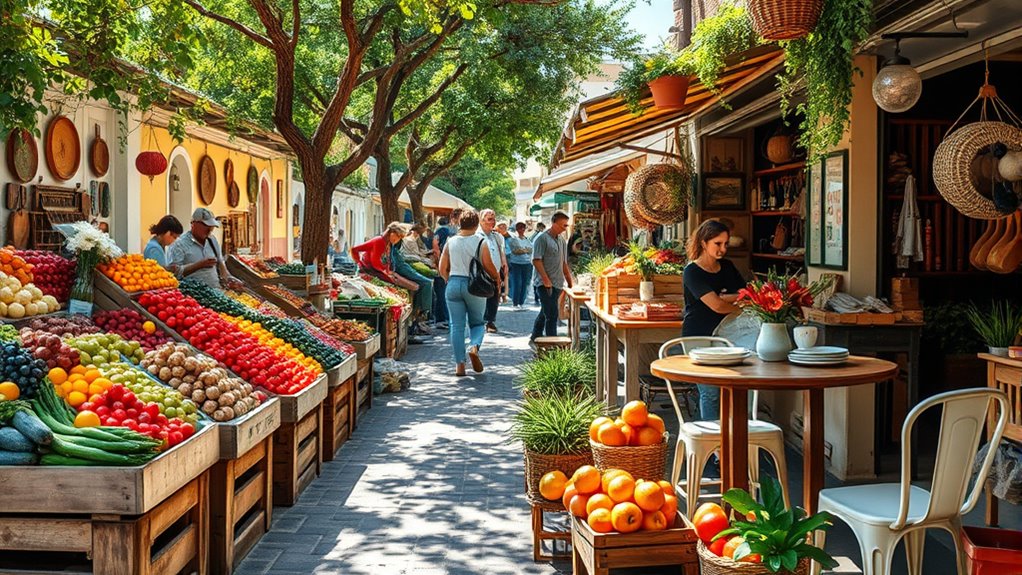
Supporting local and small businesses is another powerful way to shop sustainably.
When you choose to buy from local artisans and shops, you're not just supporting the economy; you're also reducing your carbon footprint. Local businesses often source materials nearby, which cuts down on transportation emissions.
Plus, you're more likely to find unique, handcrafted items that reflect your community's culture and heritage.
Thrifting and Vintage Shopping
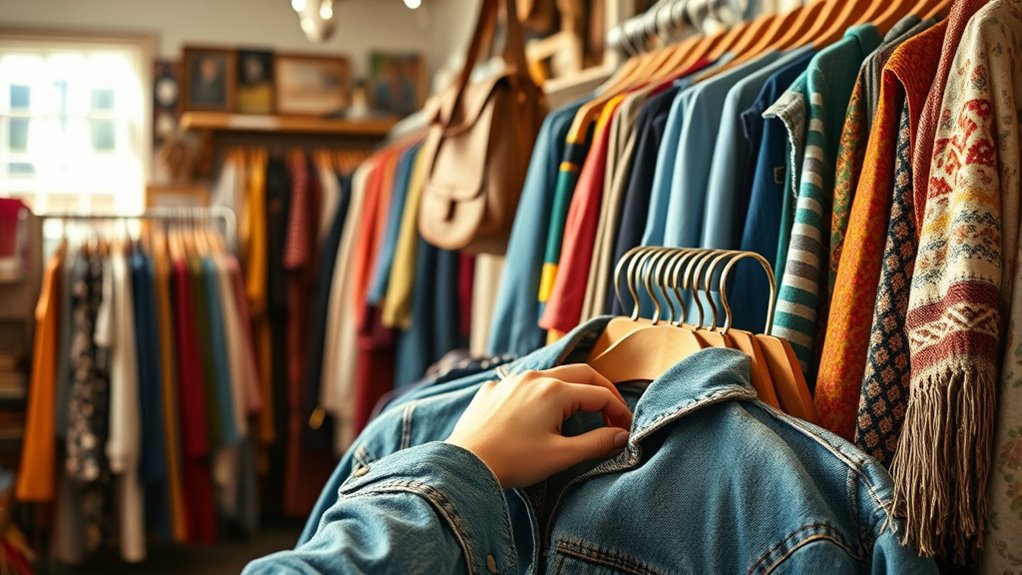
Thrifting and vintage shopping offer a fantastic way to find unique pieces while minimizing environmental impact. By choosing second-hand items, you're extending the life of clothing and reducing waste.
You'll often stumble upon one-of-a-kind treasures that reflect your personal style, setting you apart from the crowd. Plus, shopping at thrift stores usually costs less than buying new, allowing you to stretch your budget further.
When you visit thrift shops or vintage boutiques, keep an open mind. You might find incredible items that need just a little TLC.
Embrace the hunt and enjoy the stories behind each piece. By making these choices, you're not only being fashionable but also contributing to a more sustainable future.
Happy thrifting!
The Role of Certifications and Labels

When you're on the hunt for sustainable products, understanding certifications and labels can make a significant difference in your choices.
These indicators help you identify products that meet specific environmental and ethical standards. Look for familiar labels like Fair Trade, which ensures fair wages and safe working conditions, or USDA Organic, which signifies that products are free from harmful chemicals.
The Global Organic Textile Standard (GOTS) is crucial for textiles, while the Forest Stewardship Council (FSC) ensures responsible forestry practices.
Mindful Shopping Practices

As you navigate the aisles, practicing mindfulness in your shopping habits can lead to more sustainable choices.
Start by making a list of what you truly need. This helps you avoid impulse buys and stick to essentials. Take your time to read labels and understand the materials and sourcing of products. Ask yourself if each item aligns with your values and if it'll serve a purpose in your life.
Consider the long-term impact of your purchases on the environment. When possible, choose products with minimal packaging or those that are reusable.
Finally, support local businesses; they often prioritize sustainability. By making conscious decisions, you'll not only benefit yourself but contribute positively to the planet.
Building a Capsule Wardrobe

Building a capsule wardrobe can transform your approach to fashion, allowing you to curate a collection of versatile pieces that reflect your style and values.
Start by evaluating your lifestyle and identifying key items you wear regularly. Focus on timeless basics like a classic white shirt, tailored jeans, and a little black dress. Choose a cohesive color palette to mix and match effortlessly.
When shopping, prioritize quality over quantity; sustainable fabrics and ethical brands are your best friends. Limit impulsive buys by creating a shopping list based on your curated needs.
Caring for Your Clothes Sustainably
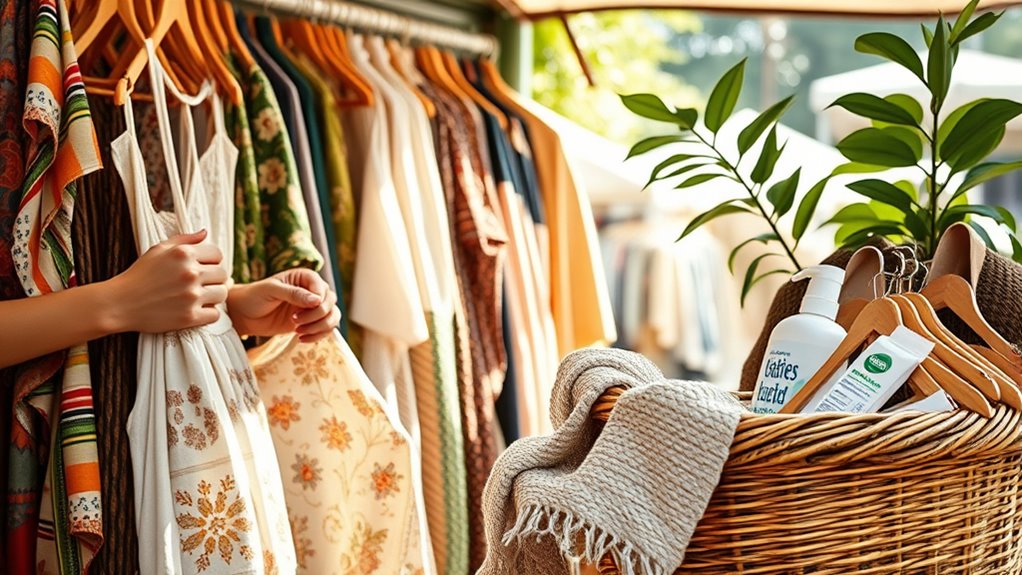
Caring for your clothes sustainably not only extends their lifespan but also reduces your environmental impact.
Start by washing your garments in cold water and air-drying them whenever possible. This minimizes energy use and protects fabric integrity. When you do wash, use a gentle detergent to avoid harmful chemicals.
Repair your clothes instead of tossing them; sewing a small tear or replacing a button can save a favorite piece.
Store your clothes properly—use padded hangers for delicate items and keep them out of direct sunlight to prevent fading.
Finally, when it's time to part with an item, consider donating or recycling it instead of throwing it away.
These simple practices can make a big difference in sustainable clothing care.
The Impact of Fast Fashion
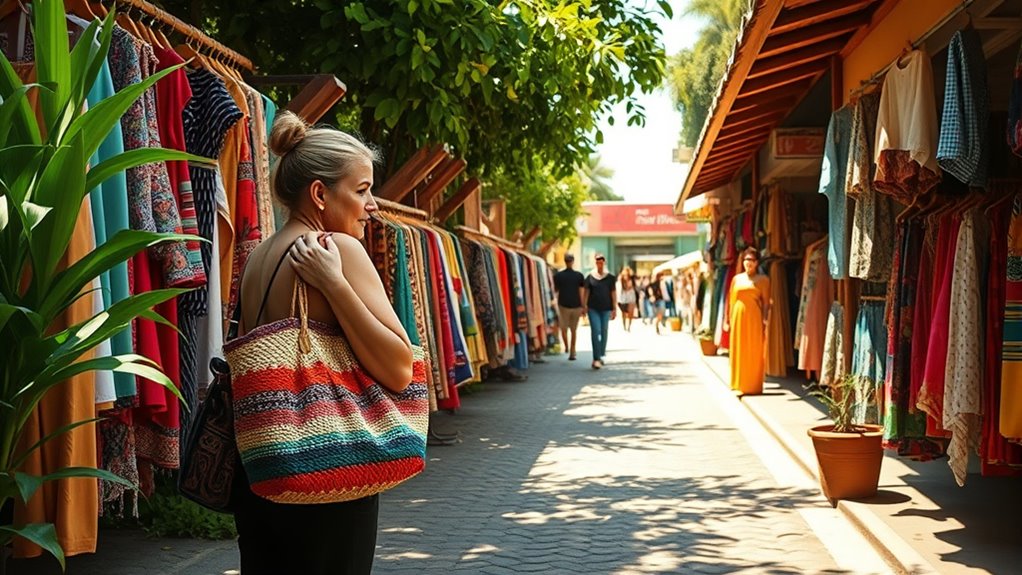
While you might be tempted by the allure of fast fashion, it's crucial to understand its far-reaching consequences. This industry churns out cheap, trendy clothes at an alarming rate, leading to massive waste. Each year, millions of tons of textiles end up in landfills, contributing to environmental degradation.
The production process often involves harmful chemicals and exploitative labor practices, putting workers' health and rights at risk. Additionally, the cycle of rapid consumption encourages you to buy more than you need, fostering a throwaway culture.
Frequently Asked Questions
How Can I Identify Sustainable Brands Easily?
Identifying sustainable brands is easier than you think. Start by checking labels for certifications like Fair Trade or Global Organic Textile Standard.
You can also research brands online to see their sustainability practices. Look for transparency in their supply chains and material sourcing.
Social media and reviews often highlight eco-friendly brands too. Don't forget to ask questions when shopping; brands that prioritize sustainability are usually happy to share their efforts with you.
What Are the Benefits of Second-Hand Shopping?
Ever wondered how your wardrobe could tell stories of a thousand lives?
Second-hand shopping offers you unique finds while reducing waste and saving money. You're not just buying clothes; you're embracing sustainability and supporting local charities or small businesses.
Plus, every purchase helps decrease demand for new production, which often harms the environment.
Is Sustainable Fashion More Expensive?
Sustainable fashion can sometimes seem more expensive, but it's important to consider the quality and longevity of the items.
You're investing in durable materials and ethical production methods, which often means your clothes last longer.
While some brands may have higher price points, you'll often find that buying less frequently offsets the cost.
Plus, by choosing sustainable options, you're supporting a healthier planet, which is worth the extra expense in the long run.
How Do I Dispose of Clothes Responsibly?
When it comes to disposing of clothes responsibly, you've got several options.
Start by donating gently used items to local charities or thrift stores. If they're beyond repair, consider recycling them at specialized textile recycling centers.
Some brands even offer take-back programs where you can return old clothes. Avoid tossing them in the trash, as this contributes to waste.
Can I Make My Own Sustainable Clothing?
Absolutely, you can make your own sustainable clothing! Start by choosing eco-friendly fabrics like organic cotton or linen.
Use patterns that minimize waste, and don't forget to repurpose materials from old garments. You can also learn sewing techniques through online tutorials or local workshops.
Conclusion
As you embark on your sustainable shopping journey, remember that every choice you make ripples through the world. You hold the power to redefine fashion, but the clock is ticking. Will you opt for eco-friendly materials, support ethical brands, and dive into the treasure troves of thrift stores? Your wardrobe could become a beacon of change. The question is, are you ready to take that step and leave fast fashion behind, or will you let the moment slip away?








